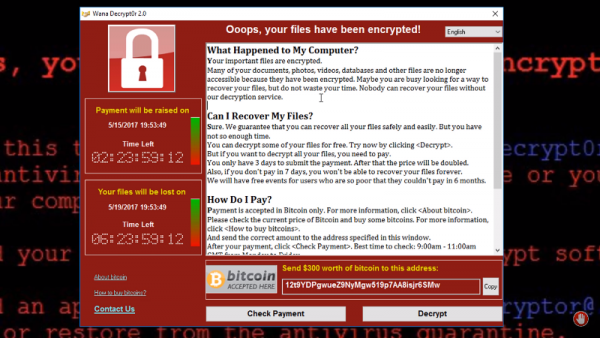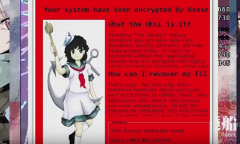By KM Diaz, | May 13, 2017

WannaCry starts through an email, in which hackers trick the victim to view attachments which releases a malware on their system. (YouTube)
A global cyberattack was reported on Friday, which crippled the NHS, international shipper FedEx, and could have infected computers in over 100 countries. Here's everything you need to know about the biggest ransomware outbreak in history.
Kaspersky Lab, a Russian cybersecurity software maker, observed 45,000 attacks in 74 countries on Friday. On that same day, Avast, a security software maker, set the tally at 57,000 infections in 99 countries.
Like Us on Facebook
What was the attack?
Hackers exploited a ransomware dubbed "WannaCry," or "WanaCrypt0r 2.0." The attack usually starts through an email, in which hackers trick the potential victim to view attachments that will release the malware in the system. This is also known as phishing.
When the computer has been infected, hackers will lock up the files and encrypts them, so the victim will not be able to access them. After that, the hackers will demand payment from users though bitcoin to regain access to their files. However, according to security experts, there is no guarantee that access will be given once the payment has been processed.
Who was affected?
In Britain, the NHS was the worst affected. GP surgeries and Hospitals in Scotland and England belong to the 16 health service organizations hit by the ransomware through Wanna Decryptor. Some of the staffs were told to use their mobiles after the attack since their key systems were also affected, such as telephones.
Hospitals in parts of England canceled some appointments and turned away patients after the attack as the data on their computers was scrambled. The hackers asked for payments of $300 to $600 to grant access. International shipper, FedEx Corp, was another high-profile victim.
Now, the top targets of the ransomware are Taiwan, Russia, and Ukraine. According to Avast, the Interior Ministry in Moscow has confirmed that it was hit by the ransomware.
In Spain, Telefonica, a telecommunications company, was one of the targets in the country. Also, Telefonica Argentina and Portugal Telecom are also said to have been potentially targeted in an attack. In Germany, the railway operator, Deutsche Bahn, was one of the high-profile targets after receiving a ransomware message on screens at stations.
Who was behind the attack?
A mysterious cybergang, known as Shadow Brokers, was reportedly the one to blame for the hack. Last April, the organization said they took a "cyber weapon" from the National Security Agency (NSA).
Eternal Blue - the cyber weapon - is a hacking tool that allows single access to all computers on Microsoft Windows. The NSA apparently developed it to gain access to computers used by enemy states and terrorists.
On April 14, the gang reportedly dropped the computer bug to an unknown website and it was then picked up by another crime gang to get exclusive access to computers worldwide. The gang deployed WannaCry to encrypt all the files by hijacking computing systems.
How can you protect yourself?
Security experts have advised members of the public to check their computer security software and ensure it is always up to date. Important security updates are included in these downloads that could block viruses on infecting the device.
Users must also be aware of the emails especially if it's from suspicious or unfamiliar sources. Do not open the links or download attachments provided in an email. Also, software, programs, and other apps should only be acquired from an official store, not through third party sources.
-
Use of Coronavirus Pandemic Drones Raises Privacy Concerns: Drones Spread Fear, Local Officials Say

-
Coronavirus Hampers The Delivery Of Lockheed Martin F-35 Stealth Fighters For 2020

-
Instagram Speeds Up Plans to Add Account Memorialization Feature Due to COVID-19 Deaths

-
NASA: Perseverance Plans to Bring 'Mars Rock' to Earth in 2031

-
600 Dead And 3,000 In The Hospital as Iranians Believed Drinking High-Concentrations of Alcohol Can Cure The Coronavirus

-
600 Dead And 3,000 In The Hospital as Iranians Believed Drinking High-Concentrations of Alcohol Can Cure The Coronavirus

-
COVID-19: Doctors, Nurses Use Virtual Reality to Learn New Skills in Treating Coronavirus Patients











